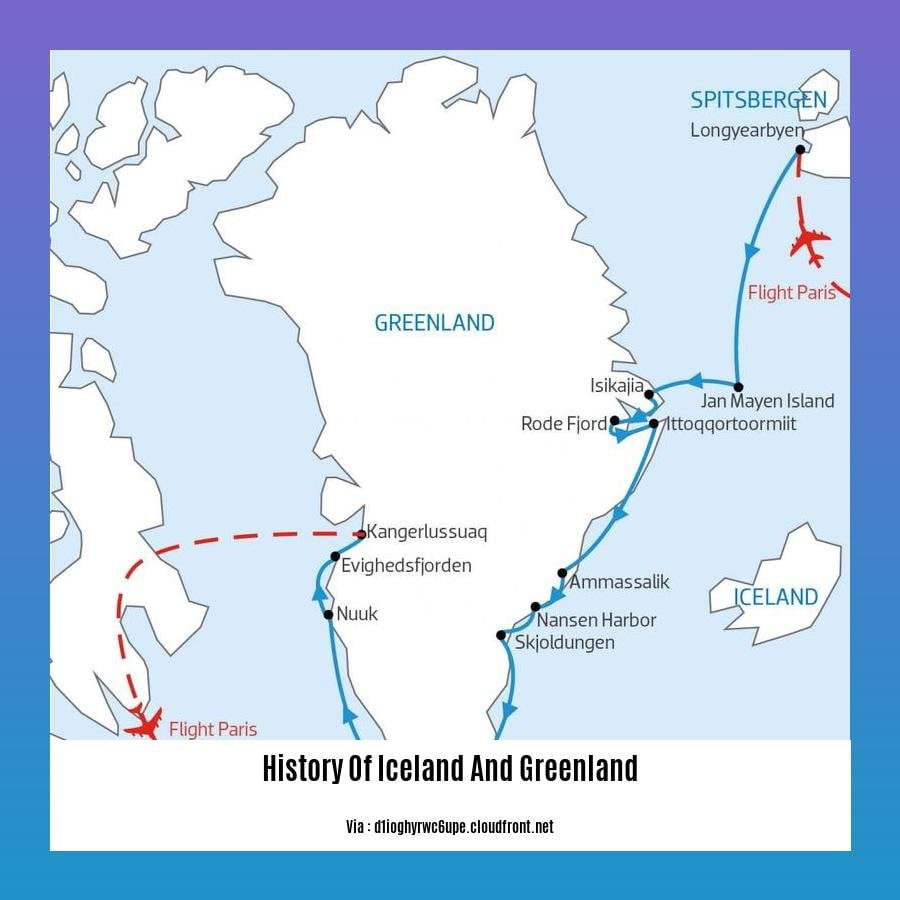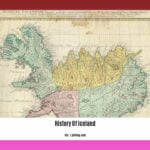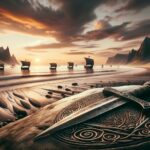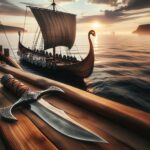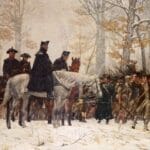Unveiling the Storied Past: A Journey Through the History of Iceland and Greenland – Delve into the captivating history of Iceland and Greenland, two lands of breathtaking natural beauty and rich cultural heritage. From the awe-inspiring glaciers and volcanic landscapes of Iceland to the ancient Viking settlements and vibrant Inuit traditions of Greenland, discover the unique stories that have shaped these Nordic gems. Immerse yourself in the sagas of explorers, settlers, and adventurers who braved treacherous seas and icy frontiers to forge a legacy that continues to inspire awe and wonder.
Key Takeaways:
In the 980s, Erik the Red led explorers from Iceland to southwest Greenland, naming it “Greenland” to attract settlers despite it being a snowy and icy land.
Erik the Red’s real reason for naming Greenland may have been to give the impression of a warm and inviting place to entice settlers.
Iceland was initially known as “Snæland” or “snow land” by the first Norse explorer, Naddador, due to the snowy conditions he encountered upon arrival.
History Of Iceland And Greenland
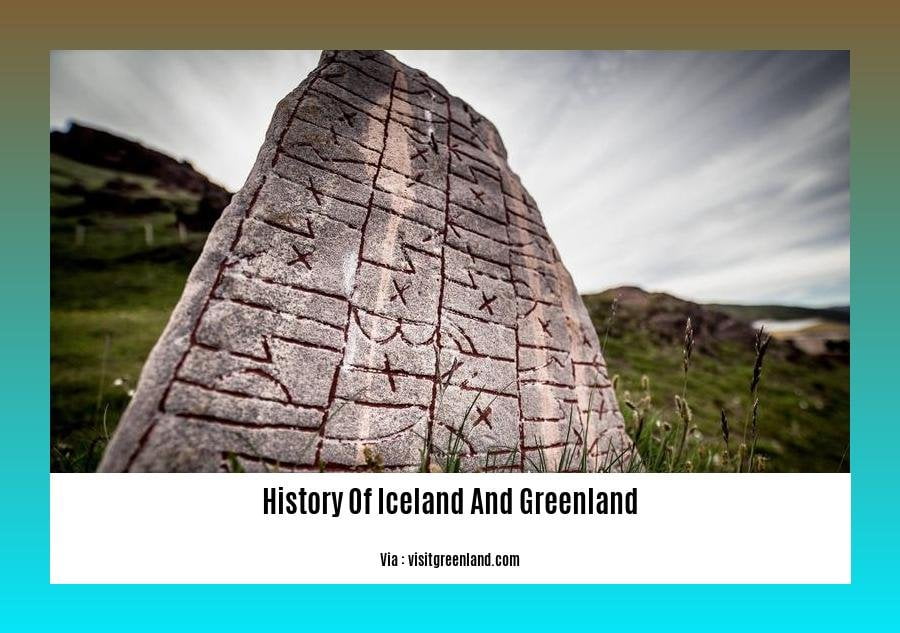
Adorned with astonishing vistas and shrouded in intriguing histories, Iceland and Greenland stand as prominent jewels of the North Atlantic. Delve into the annals of these captivating lands, where Vikings embarked on intrepid voyages, settlements flourished amidst icy terrains, and nature unveiled its awe-inspiring grandeur.
Tracing Iceland’s Roots
Iceland’s story begins with its dramatic genesis from volcanic eruptions, shaping an untamed landscape of fire and ice. The arrival of Norse explorers in the 9th century marked a pivotal moment, as these intrepid seafarers established settlements, bringing their language, culture, and traditions to this remote isle.
The Enigmatic Greenland
Across the icy expanse, Greenland beckoned adventurers with its allure of verdant pastures, earning its name from Erik the Red, a wily explorer seeking to entice settlers to this harsh yet alluring land. Yet, beneath its verdant façade lay a frozen heart, a vast expanse of ice that molded Greenland’s destiny.
The Dance of Fire and Ice
In this realm of extremes, nature’s elements orchestrate a mesmerizing symphony. Iceland’s volcanoes erupt, spewing molten rock that sculpts the landscape, while glaciers descend from icy heights, carving deep fjords and valleys. This interplay of fire and ice has forged a land of stark beauty, where volcanoes and glaciers coexist in a precarious balance.
Seafaring Legacies
The maritime spirit courses through the veins of Iceland and Greenland, their people bound to the sea by ancestral ties. From the Viking longboats that once sailed these waters to the modern fishing vessels that ply the North Atlantic, the ocean remains an integral part of their identity and sustenance.
Cultural Tapestry
The cultural heritage of Iceland and Greenland is a vibrant tapestry woven from Norse, Inuit, and modern influences. The sagas, epic tales of Viking exploits, resonate through time, while traditional crafts, such as intricate knitwear and intricate carvings, showcase the enduring artistry of these lands.
Navigating the Modern Era
Today, Iceland and Greenland stand as modern nations, their economies buoyed by fishing, tourism, and renewable energy. Yet, they face the pressing challenges of climate change, as rising temperatures threaten their fragile ecosystems and livelihoods.
As you embark on a journey through the History Of Iceland And Greenland, let the stories of these captivating lands unfold before you. Discover the footprints of Vikings, marvel at the interplay of fire and ice, and immerse yourself in the vibrant cultures that have flourished in this unique corner of the world.
Want to know the historical background of this beautiful country? Dive into the journey of Iceland’s rich cultural heritage and marvelous landscapes in our comprehensive history of Iceland article.
Formation of Independent States
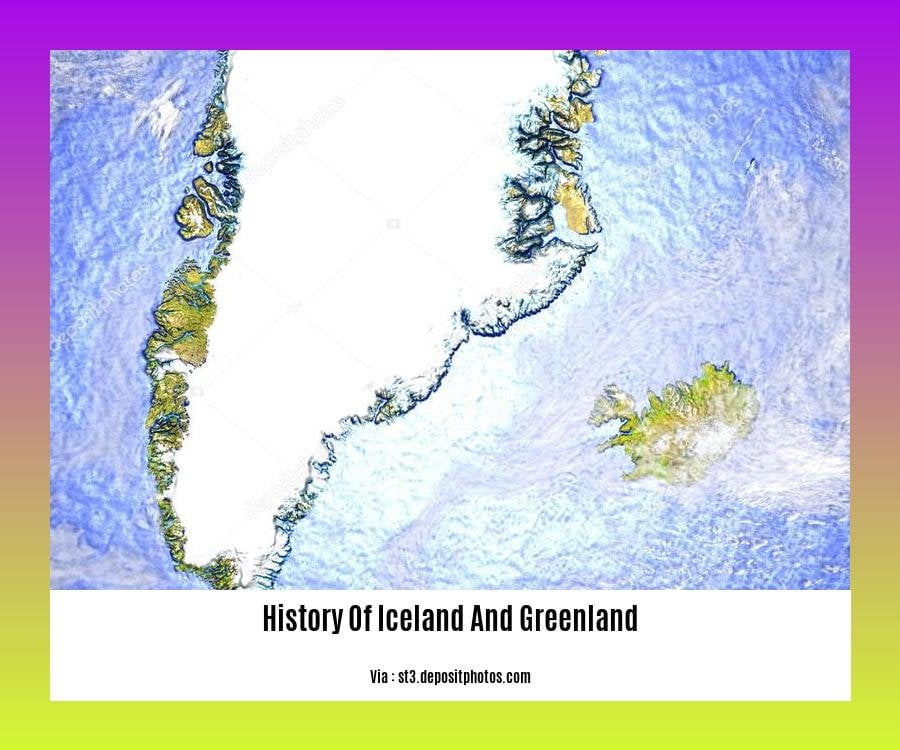
In the annals of history, Iceland and Greenland emerge as captivating landscapes etched with a rich tapestry of human settlement, cultural evolution, and political transformations. From the volcanic fissures of Iceland to the icy expanses of Greenland, these Nordic lands have undergone a remarkable journey towards self-determination and independence.
H3: Iceland’s Path to Sovereignty
- Viking Voyages and Early Settlements:
- Norse explorers, driven by their intrepid spirit, ventured into the uncharted waters of the North Atlantic, discovering and settling Iceland in the 9th century.
The establishment of the Althingi in 930 CE marked a significant milestone, serving as the world’s oldest parliament and a testament to Iceland’s early democratic traditions.
Norwegian and Danish Rule:
- Iceland’s sovereignty faced a turning point in the 13th century when it fell under the rule of Norwegian and later Danish monarchs.
Despite foreign rule, the Althingi continued to play a role in governance, preserving a sense of Icelandic identity and autonomy.
Iceland’s Independence Movement:
- The 19th century witnessed a surge of nationalistic sentiments and a growing desire for self-determination among Icelanders.
- Prominent figures like Jón Sigurðsson championed Iceland’s independence, leading to the Formation of Independent States in 1918.
- The Act of Union with Denmark granted Iceland limited autonomy, paving the way for full independence in 1944.
H3: Greenland’s Quest for Self-Governance
- Inuit Heritage and Colonial Encounters:
- Greenland’s history is intertwined with the resilience and traditions of the Inuit people, who have inhabited the island for millennia.
European exploration and colonization brought significant changes, including the introduction of Christianity and Danish rule.
Home Rule and the Road to Autonomy:
- In 1979, Greenland took a pivotal step towards self-governance with the establishment of Home Rule, granting it significant control over its internal affairs.
The Greenlandic language and culture experienced a revival, and the island’s unique identity gained international recognition.
Referendum and the Formation of Independent States:**
- A 1982 referendum resulted in Greenland’s withdrawal from the European Economic Community, further asserting its desire for autonomy.
- The Formation of Independent States in 2008 marked a historic moment, granting Greenland greater control over its resources, economy, and foreign policy.
Key Takeaways:
- Iceland and Greenland’s histories are shaped by a blend of volcanic activity, Norse and Inuit settlements, and the quest for self-determination.
- Both countries experienced periods of foreign rule, which influenced their political and cultural development.
- Nationalistic movements and prominent leaders played crucial roles in achieving independence and autonomy.
- Formation of Independent States marked a significant milestone in the political evolution of Iceland and Greenland.
Source:
[1] https://en.wikipedia.org/wiki/History_of_Iceland
[2]
Cultural and Historical Landmarks
We’re going to explore Iceland and Greenland, but not just any part of these places—we’re talking about their cultural and historical landmarks.
Ice and fire blend in Iceland, a land of active volcanoes and colossal glaciers. Think of it as a geological dance floor! Norse settlers brought their traditions, leaving a unique cultural imprint. Now, it’s a modern nation dancing to the tune of Björk and facing the rhythm of climate change.
Greenland, an ice-covered giant, boasts a rich Inuit heritage. It’s a place where kayaks cut through icy waters, and the northern lights paint the night sky with their celestial brushstrokes. Today, this vast island grapples with the melting grip of a warming world.
Sagas and Storytellers
The sagas, epic tales of heroes and battles, are in Icelanders’ DNA. Remember those long winter nights? They were story-spinning marathons! The sagas are more than history—they’re the soul of Iceland.
Volcanic Delights
Let’s talk volcanoes—they’ve shaped Iceland’s landscape. You can walk into a crater, feel the heat beneath your boots and smell sulfur in the air. Trust me; it’s a thrill ride for geology lovers!
Inuit Ingenuity
Greenland’s Inuit ancestors were resourceful survivors, living off the bounty of the sea. From kayaks to dog sleds, they adapted to their icy home with ingenuity. Their stories of resilience and harmony with nature are awe-inspiring.
Cultural Exchange
Today, Iceland and Greenland are cultural melting pots. Reykjavík, Iceland’s quirky capital, hosts vibrant art, music, and food scenes. Greenland’s cities blend Inuit traditions with modern influences. These places are living proof that history and modernity can dance together beautifully.
Key Takeaways:
– Cultural and Historical Landmarks: Iceland and Greenland offer a wealth of cultural and historical landmarks, from ancient Norse ruins and Viking settlements to Inuit archaeological sites and colonial architecture.
Natural Wonders: Both Iceland and Greenland possess stunning natural landscapes, including active volcanoes, geysers, glaciers, and icebergs.
Cultural Heritage: The unique cultural heritage of Iceland and Greenland is reflected in their traditional arts, crafts, music, and cuisine, offering visitors a chance to immerse themselves in the local culture.
Modern Societies: While preserving their cultural heritage, both countries have developed modern societies with thriving economies, strong educational systems, and advanced infrastructure.
Environmental Challenges: Iceland and Greenland are facing significant environmental challenges, including climate change, glacier retreat, and the impact of tourism on fragile ecosystems.
Sources:
– The Rough Guide to Iceland and Greenland
– Lonely Planet Iceland and Greenland
Modern Developments and Challenges
In the tapestry of history and culture, Iceland and Greenland stand as two vibrant threads, each with a unique tale to tell. Once cloaked in legend and mystery, these Nordic lands have undergone a remarkable transformation in recent times. Let’s unravel their captivating narratives, highlighting their historical significance, cultural tapestry, and the pressing challenges they currently face.
Key Takeaways:
- Historical Significance:
- Iceland and Greenland boast rich histories, shaped by Viking explorers, Norse settlers, and resilient indigenous communities.
Both regions have witnessed political transitions, cultural evolution, and the emergence of modern nation-states.
Cultural Tapestry:
- Iceland’s cultural fabric is a vibrant blend of Norse heritage, modern influences, and a deep connection to its natural environment.
Greenland’s cultural identity is rooted in Inuit traditions, interwoven with the harsh beauty of the Arctic landscape.
Modern Developments:
- Iceland has transformed into a prosperous, modern nation, known for its geothermal energy, technological advancements, and thriving tourism industry.
Greenland has experienced rapid socio-economic changes, balancing traditional livelihoods with the development of natural resources.
Challenges:
- Climate Change: Both Iceland and Greenland face significant challenges due to climate change, including rising sea levels, melting glaciers, and increasingly unpredictable weather patterns.
- Economic Diversification: Greenland is working to diversify its economy beyond fishing and mineral extraction, seeking sustainable industries.
- Preservation of Cultural Heritage: Balancing modernization with the preservation of cultural heritage poses a delicate challenge for both regions.
- Tourism Management: Iceland and Greenland must manage the influx of tourism while protecting their fragile ecosystems and preserving their cultural authenticity.
Navigating the Crossroads:
Amidst the ebb and flow of time, Iceland and Greenland stand poised at a crossroads, balancing the allure of progress with the preservation of their unique identities and natural wonders. Their stories remind us of the resilience of human spirit, the enduring power of history, and the imperative to navigate the challenges of the modern world while honoring the past.
Citations:
[1] https://en.wikipedia.org/wiki/History_of_Iceland
[2]
FAQ
Q1: How did Iceland get its name?
A1: The name “Iceland” was given by the first Norse explorer, Naddador, due to the snowy conditions he encountered upon arrival. Initially known as “Snæland” or “snow land,” the name “Iceland” was strategically chosen by Erik the Red to attract settlers by creating the impression of a warm and inviting place.
Q2: Who were the first settlers of Iceland?
A2: The first permanent settlers of Iceland were Norse explorers and their enslaved companions from Western Europe, particularly from Norway and the British Isles. They arrived in Iceland in the late 9th century, led by Ingólfur Arnarson, a Norwegian chieftain.
Q3: What was the Althingi, and what role did it play in Iceland’s history?
A3: The Althingi was an assembly of chieftains and representatives established in 930 CE. It served as Iceland’s parliament during the Commonwealth period, convening annually at Þingvellir. The Althingi was responsible for shaping laws, resolving disputes, and electing leaders, playing a crucial role in Iceland’s political development.
Q4: When did Iceland become a republic?
A4: Iceland became a republic on June 17, 1944, following a vote in favor of independence. The Act of Union with Denmark expired on December 31, 1943, leading to the referendum and the establishment of the Republic of Iceland.
Q5: What are some of the key historical sites in Iceland?
A5: Iceland is home to several significant historical sites, including Thingvellir National Park, a UNESCO World Heritage Site and the location of the Althingi assembly. Other notable sites include Hallgrímskirkja, the largest church in Iceland, and Perlan, a nature exploratorium showcasing Icelandic nature and culture. Additionally, the Sun Voyager sculpture in Reykjavík symbolizes the power of the sun and the dream of exploration.
- Amazing March Fun Facts: Unveiling History & Celebrations - April 15, 2025
- Master how to write height: A complete guide - April 15, 2025
- How High Are Your Standards Test: Find Your Perfect Match Now - April 15, 2025
